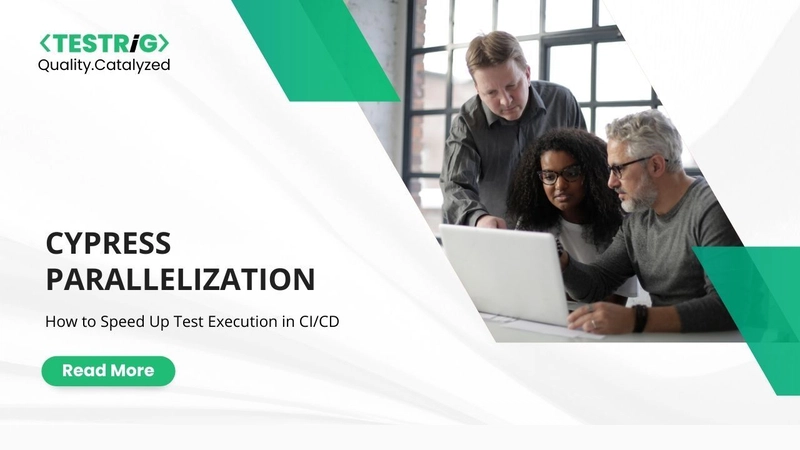In software development, running automated tests quickly is crucial to keeping up with fast release cycles. Cypress is a great tool for testing web applications, but as your test suite grows, running tests one by one can slow things down. Parallelization solves this problem by running multiple tests at the same time, reducing execution time and making CI/CD pipelines more efficient.
How Does Cypress Parallelization Work?
Cypress allows tests to be split across multiple machines or processes, so they run simultaneously instead of one after another. This means:
Faster Test Execution – Large test suites finish in a fraction of the time.
Improved CI/CD Efficiency – Tests fit better into fast development cycles.
Better Resource Utilization – Optimizes the use of available computing power.
How to Set Up Cypress Parallelization in CI/CD
Step 1: Enable Cypress Dashboard
To use Cypress parallelization, you need to connect your project to the Cypress Dashboard.
Sign up at Cypress Dashboard and create a new project.
Copy the project ID and API key provided by Cypress.
Run the following command in your terminal to enable recording:
npx cypress run --record --key YOUR_DASHBOARD_KEY
Step 2: Run Tests in Parallel
Once the Cypress Dashboard is set up, enable parallel execution in your CI/CD pipeline by adding the --parallel flag:
npx cypress run --record --key YOUR_DASHBOARD_KEY --parallel
This command ensures Cypress automatically splits and runs your tests across multiple machines.
Step 3: Optimize Your Setup
To get the most out of parallelization:
Use More CI Runners – The more machines you allocate, the faster the tests will run.
Split Test Files Evenly – Distribute tests logically to avoid overloading a single runner.
Use Caching – Save dependencies and test artifacts to speed up reruns.
Advanced Optimization Strategies for Cypress Parallelization
1. Dynamic Test Splitting
Instead of manually assigning test files to different runners, use Cypress’s intelligent load balancing feature to distribute tests based on historical run times. This ensures an even workload across all available CI/CD machines.
2. Prioritizing Critical Tests
Not all tests are equally important. Prioritize running high-impact tests first to catch critical issues early. Use Cypress tags to run specific subsets of tests when needed:
npx cypress run --env grep=smoke --record --key YOUR_DASHBOARD_KEY --parallel
3.Parallel Execution Across Cloud-Based Test Grids
For teams running large-scale testing, integrating cloud-based test execution platforms like Sauce Labs, BrowserStack, or LambdaTest can further enhance parallel execution by running tests across multiple browsers and environments simultaneously.
4.Handling Flaky Tests
Flaky tests can reduce the benefits of parallelization. Use Cypress retry logic to automatically rerun failing tests:
npx cypress run --retries 2 --record --key YOUR_DASHBOARD_KEY --parallel
Best Practices for Cypress Parallelization
Keep Tests Independent– Avoid dependencies between tests so they can run in any order.
Monitor Test Performance – Use Cypress Dashboard insights to identify slow or flaky tests.
Optimize Test Distribution – Balance the workload across available machines for better efficiency.
Fix Flaky Tests – Identify and resolve unreliable tests to ensure stable test runs.
Leverage CI/CD Pipelines Efficiently – Use workflows to dynamically scale test execution based on project needs.
Conclusion
Cypress parallelization is a powerful way to speed up test execution and improve CI/CD efficiency. By leveraging dynamic test splitting, prioritizing critical tests, and integrating cloud-based testing platforms, teams can achieve even faster and more reliable automated testing.
As a leading Web Automation Testing Company, At Testrig Technologies, we help businesses optimize their web and mobile automation testing strategies. If you need expert guidance on Cypress parallelization, CI/CD automation, or cloud-based test execution, reach out to us today!



Top comments (0)